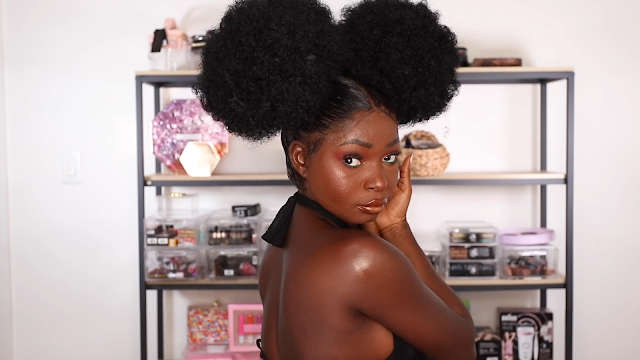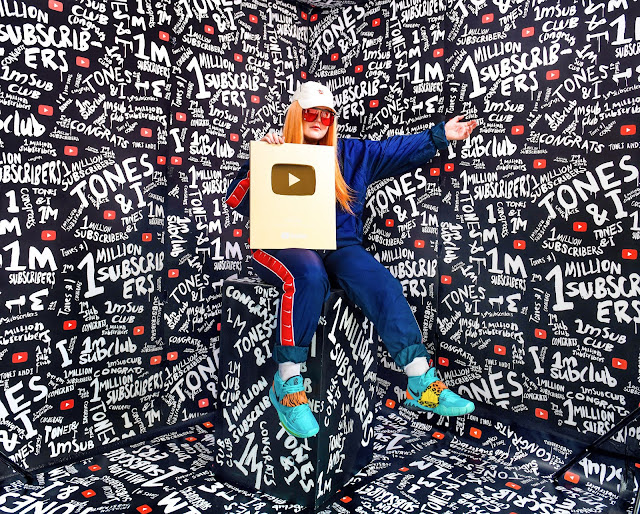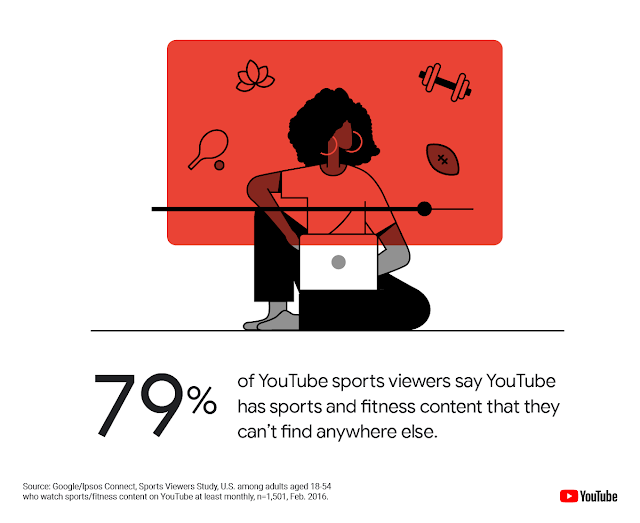Author Archives: anzprteam
Year in Search: Kiwis Top Trending Searches for 2020 Revealed
From banana bread to Bloomfield and Benee, this year’s top trending searches show what puzzled, intrigued and entertained us this year.
People come to Google Search for help in moments big and small billions of times a day - whether it’s to ask what is matariki, to find the lyrics to Kiwi Jawsh685’s Savage Love or understand antifa. Which is why, for the past 20 years, Google’s annual Year in Search moment has provided a window into the cultural zeitgeist.
So let’s take this moment is a time for reflection, and look at some of the themes that defined 2020 for Kiwis:
Staying home and figuring it out
As Alert Levels and Dr Ashley Bloomfield became part of our everyday vernacular, we quickly became adjusted to the new language of a pandemic, in understanding lockdown restrictions and how best to protect ourselves. We made face masks and hand sanitizer, and as we stayed home and faced job uncertainty, we looked to Work and Income for support. We relied on the Ministry of Health as knowledge became power in understanding the pandemic. We also discovered new ways to continue to work and learn online, through productivity and learning tools like Zoom, Seesaw and Education Perfect.
Culinary curiosity, but make it simple
Kiwis searched for “easy recipes” more than most other countries in March, reflecting either a newfound vigour or fear for the home cooking adventure of lockdown. Putting all the flour to good use, baked goods were king - hot cross buns, scones and pancakes all popular options. Naan and butter chicken were the more interesting savoury fare. Perhaps showing the limited runs to the supermarket, we also wanted to know how to make buttermilk and self raising flour. Chelsea Winter was an inspiration as was a plant based diet. And to counter earlier indulgences we wanted to know how to lose weight...fast.
Kiwis supporting Kiwis
In a year when many businesses faced tough times, Kiwis searched for "shop local" and "small business" more than we have for a decade. We showed greater interest in the economic market with NZX50 and Sharesies both trending. Homegrown talent piqued our interest as they made their mark overseas; Taika Waititi kept us entertained (at home) during lockdowns, Benee performed on a global stage, and Israel Adesanya, appearing on the trending Kiwis list for the second year in a row, showed his prowess in MMA fighting internationally. And in true Kiwi style, sporting heroes Lydio Ko, Ross Taylor and Dan Carter broke through.
Politically Engaged
Once we figured out how to vote, Kiwis showed their civic engagement with strong interest in our local election and the political figures who defined our election race. We were also following events happening worldwide closely, with international politicians making up half of the public figures on New Zealand’s list of trending international faces, and ‘US Election Results’ making it to second place of the Overall Trending Searches list.
More than ever, New Zealand’s top trending searches reflect a year of seeking new information, understanding and awareness of the world around us.
Overall Trending Searches:
Coronavirus
US Election Results
Zoom
SeeSaw
Kobe Bryant
Ministry of Health
Education Perfect
Work and Income
Naya Rivera
Sharesies
News Events:
Coronavirus
US Election Results
Australia fires
Election Results NZ
Nzx50
Iran
Italy Coronavirus
Beirut
Level 2
Iowa Caucus
Kiwi Celebs:
Hayley Holt
Israel Adesanya
Ashley Bloomfield
Lydia Ko
David Bain
Taika Waititi
Chelsea Winter
Benee
Dan Carter
Ross Taylor
Global Figures:
Kim Jong Un
Donald Trump
Boris Johnson
Joe Biden
Tom Hanks
Elon Musk
Joe Exotic
Kamala Harris
Carole Baskin
Kanye West
New Zealand Politicians:
Todd Muller
Jacinda Ardern
Judith Collins
Simon Bridges
Chloe Swarbrick
David Clark
Andrew Falloon
David Seymour
Winston Peters
How To:
How to make a face mask?
How to make hand sanitizer?
How to vote NZ?
How to lose weight fast?
How to make buttermilk?
How to make pancakes?
How to make self raising flour?
How to make naan bread?
How to make bread?
How to use Zoom?
What is:
What is Coronavirus?
What is the name of the Kingdom in Tangled?
What is Level 2?
What is a pandemic?
What is Matariki?
What is the time?
What is a simp?
What is buttermilk?
What is 5g?
What is antifa?
Loss:
Kobe Bryant
George Floyd
Chadwick Boseman
Caroline Flack
Sushant Singh Rajpu
Kenny Rogers
Kelly Preston
Eddie Van Halen
Sean Connery
Rishi Kapoor
Recipe:
Hot cross bun
Scone
Banana bread
Bread
Naan bread
Banana cake
Carrot cake
Butter chicken
Ciabatta
Pancake
Sporting Events:
India vs New Zealand
All Blacks vs Australia
NRL
EPL
Champions League
Premier League
IPL
Australia Open 2020
Super Rugby 2020
Mitre 10 Cup
Source: Google New Zealand Blog
Powering innovation and efficiency in Australia’s public sector
Earlier this year we shared how we were working to support organisations in Australia and around the world by providing services like expanded capacity, powerful remote working tools, shared datasets and healthcare APIs to support research.
We’re proud to continue to play a key role in powering the pandemic response, partnering with a number of government agencies to empower scientific breakthroughs, enable more effective joint critical responses, and facilitate high-impact constituent engagement.
Here’s a look at how government agencies in Australia are transforming services for constituents and how Google Cloud is supporting.
Improving customer service and experience
As citizens and businesses grapple with widespread uncertainty, it is critical that government service delivery is seamless, dynamic, and in line with citizen needs, with data analytics playing a key role in this.
For example, the Digital Transformation Agency (DTA), which helps government agencies improve services to make them simple, clear and fast, is working with Google Cloud on its gov.au Observatory. The Observatory’s goal is to measure how people interact with government services, empowering and supporting teams to provide better services and outcomes for everyone. With Google Cloud, the DTA is using data from Google Analytics, Google Search Console, and the whole-of-government web crawl to quantify and visualise government websites, and show how users move through online services. This data is then analysed via BigQuery, which handles over 1.2 billion data points per month.
Service NSW, which provides access to government services in New South Wales, is using Google Cloud’s API management platform Apigee to improve business agility. With Apigee, the agency is able to continuously innovate, launching new features every single day. Performance and availability are key criteria for the agency as it runs digital services across the entire state and downtime isn’t an option. In addition, the ability for Service NSW to meet governance and security standards is central to its use of Apigee, as Google Cloud acts as the first line of defence against cyber-threats.
The importance of innovation during this time is greater than ever and at CSIRO, Australia’s national science agency, who are making a difference in everyday lives by empowering scientific breakthroughs. Their innovative approach to analytics, machine learning and containers is a key advantage in helping researchers to spin up resources on major cloud providers, such as Google Cloud, and gain faster access to compute for their projects. Our cloud solutions also enable CSIRO to define security requirements for the cloud, including authentication and authorisation, to ensure that research run or stored in the cloud is protected.
Looking ahead as Australia emerges from COVID-19
There’s no denying 2020 has been a challenging year but it’s inspiring to see that Australia is taking tentative steps to get its economy back on track and determine what the new normal for citizens’ personal and working lives looks like. Our government agencies are central to this effort.
Google Cloud is committed to driving the digital transformation of our public sector forward. We’re continuing to expand our capabilities locally, including the launch of our Melbourne region in 2021. Our aim is to work with our government partners at a state and federal level to power a platform of innovation, digitisation and efficiency to ultimately improve the lives of all Australians.
Tune into the Google Cloud Public Sector Summit on Dec 8-9. Registration is free so don’t delay!
by Mark Innes, Vice President, ANZ at Google Cloud
Source: Official Google Australia Blog
Celebrating the Outstanding 50 LGBTI+ Leaders of 2020
Source: Official Google Australia Blog
Google and Spark deliver no-cost digital skills training for SMEs
Google and Spark are launching a tailored programme of digital skills training designed especially for New Zealand small and medium enterprises (SMEs). The programme is fully virtual and will run through November initially, with future dates to be announced. It aims to support those small businesses that see a clear need to digitise if they are to operate more productively and continue to thrive, but either don’t know where to start or simply want some extra support along the way.
Hosted through Spark Lab, the programme will initially be available to Spark customers only, but the intention is to open it up more widely over time. It has been designed based on a survey of Spark SME customers in October – which showed that while there is appetite for digital upskilling by Kiwi SMEs, knowing where to start can sometimes be the first hurdle. Full details may be found at sparklab.co.nz and business owners will learn about various strategies and Google tools to help their businesses be found and stand out online. The goal is that this digital skills training will further safeguard Kiwi businesses against the effects of COVID-19 by helping them be more productive in an uncertain economy.
Kate Jarrett, owner of Loxy’s Salons in Auckland has participated in similar Google digital skills workshops and said, “The tools I learnt through the Google digital skills workshop were invaluable to my business both pre and post Covid. I was amazed to learn that these tools and insights were available to me and so many of them at no cost too. I wondered how I’d fumbled my way through business up until then, and thought of how different things may have been for me had I utilized these tools much earlier in my business journey. In the constantly evolving and often uncertain world of business, I feel at ease knowing I have these Google tools at my disposal to pivot quickly and stay one step ahead.”
Spark Marketing Director Matt Bain said, “In the past year, we have seen a massive shift by consumers from physical to digital channels. This is a big opportunity for many of our SMEs to use what are often cheaper and more effective channels to reach their customers. Spark wants to support them to grab this opportunity. It’s fantastic to have a like-minded partner in Google, who will work alongside us to help remove some of the barriers Kiwi SMEs face when it comes to reaching and serving their customers.”
Google New Zealand Country Director, Caro Rainsford said “As long time partners, Spark and Google share a common goal of assisting all Kiwis with digital growth and supporting economic recovery. I’m so pleased that at a time where economic recovery is at the forefront of business strategy, we’re able to reach a broad group of SMEs across New Zealand and continue to share the knowledge, expertise and opportunity afforded through Google’s tools for businesses.”
The program will be run by a team of Google Digital Strategists and focus on three main areas:
Getting your business online: Insights show many small businesses aren’t aware of the free marketing tools available to them through Google My Business, so this will be about maximising a Business Profile on Google.
Reaching new customers online: With New Zealand’s economy under increasing pressure, we know that small businesses are being impacted. This module will be about connecting with customers in moments that matter.
Protect your online presence: When growing a digital presence it's also important to secure and safeguard your business by staying safe online. Protect your website and learn best practices for online safety.
Spark business customers can opt in to the most relevant workshops for their business and find out more information at sparklab.co.nz.
Source: Google New Zealand Blog
Reflecting on our Google News Initiative work in Australia
Source: Official Google Australia Blog
Reflecting on our Google News Initiative work in Aotearoa New Zealand
Today, we reflect on the past two years of the Google News Initiative as we publish our first GNI Impact report. Our efforts have reached every corner of the world, including here in New Zealand, and we’re proud of the work we’ve accomplished in those two and a half years with our partners. We’ve learned that New Zealand’s news industry is resilient, entrepreneurial and diverse. Therefore, despite the shadow of the pandemic and long-term shifts in consumer behaviour that have upended traditional business models, there is reason for hope and optimism.
But we also learned that crises can be unexpected and require unprecedented support. That’s why when the COVID-19 pandemic swept through the world, we refocused our efforts to short-term relief through the Journalism Emergency Relief Fund. Publications across Fiji, Samoa, New Zealand and other Pacific Islands, have received funding to support local reporting throughout the crisis. We were able to provide financial support to a total of 76 news organisations across the Pacific.
As we look back, here are some highlights of our work in Aotearoa, which spanned three key areas:
Elevating quality journalism
Helping newsrooms to create quality journalism is the first pillar of the Google News Initiative, and this work started here in early 2019 through our partnership with the Walkley Foundation and the work of our News Lab Teaching Fellows. Together, we provided training workshops across New Zealand to support a sustainable future for journalists and to make sure that journalists and media organisations have the digital skills to succeed at their craft. Since then, we’ve trained almost 600 journalists in dozens of newsrooms across the country.
With the recent General Election, the NewsLab team ramped up their efforts, collaborating with news organisations to support online fact-checking. They offered a series of free verification workshops to point journalists to the latest tools and technology to tackle misinformation and support their coverage of the elections. The NewsLab team also launched a bespoke Trends Microsite, which was updated weekly to help Kiwi journalists in their Election reporting, and supported the work of Policy.nz, which helped Kiwis to better understand the core polling issues by creating a complete guide to the election - from party and candidate profiles to summaries of more than 2,000 policies.
Empowering sustainable business growth
Readers’ consumption habits have changed, and media have had to adapt to this ever-evolving environment. We believe in empowering media to find sustainable solutions that will enable their long-term success. For example, we worked with BusinessDesk locally to implement Subscribe with Google, a solution that makes it easier for readers to subscribe to premium content online, and retain access through platforms, to ensure a seamless experience. We hope to help roll this tool out to more publishers across New Zealand soon.
“BusinessDesk is delighted with its experience of being the first news website in NZ to implement Subscribe with Google. The impact on subscription revenue has been immediate and material, and the working relationship with Google a pleasure,” said Pattrick Smellie, CEO of BusinessDesk.
We also welcomed New Zealand Media and Entertainment as part of the first GNI APAC Data Labs cohort. The five month program helped participating news organisations to fully optimise data available to them, but also explore new ways to advance their data maturity. To ensure the lessons from participating publishers were put to good use, we published a playbook capturing use cases to drive data culture in newsrooms. We invite any Kiwi publication to assess their data maturity level here and deep dive into the playbook for applicable solutions.
Empowering newsrooms through innovation
Finally, while the media may face many challenges today, continuous innovation should be front and centre -- and we have seen the innovative spirit through our interactions with Kiwi publications and reporters. Last year, Editor Phillip O’Sullivan was chosen as one of the 12 Fellows for the Google News Initiative (GNI) Newsroom Leadership Program, a collaboration between GNI and the Columbia School of Journalism, to develop the business and product expertise of emerging newsroom leaders from the Asia Pacific region.
Earlier that year, we also awarded New Zealand Press Patron (Ripple Media Ltd.) as part of the first APAC Innovation Challenge. PressPatron is a media monetisation platform that turns readers into paying supporters, by streamlining the payment process for memberships and donations. Their funded project aims to add new features to their platform, making it easier for traditional publishers to sell print and digital subscriptions under a membership model.
What’s next
We recently launched the GNI Digital Growth Program in the region, which has been designed with industry experts and news publishers across the world to help small and medium sized news organisations grow their digital businesses. We invite Kiwi media to course through a range of free playbooks, interactive exercises, digital workshops and labs.
We intend to work more closely with local news publishers in New Zealand next year. The focus of our efforts will be on helping publishers innovate to build and optimise their digital advertising revenue streams.
Source: Google New Zealand Blog
Google.org Funds InsideOUT to Increase Support of Rainbow Youth in Aotearoa New Zealand
The impact of the COVID-related health crisis is not difficult to see. Every aspect of society has been affected in some way, whether its education, the economy or the way whānau can come together. That’s why in times like this, when marginalised communities are being most adversely affected, organisations like InsideOUT are so important. As a national charity that works to give rainbow or LGBTQIA+ youths in Aotearoa a sense of safety and belonging in their schools and communities, InsideOUT’s mission never stops.
Google.org, Google’s philanthropic arm, previously announced a global effort to support over 70 organisations around the world to help the LGBTQ+ community impacted by COVID-19, including InsideOUT. New Zealand’s recipient of this support, InsideOUT, will be able to initiate a series of programmes that would not have been possible without this additional grant.
Designed in collaboration with takatāpui, indigenous rainbow young people, their project aims to increase understanding and awareness of takatāpui identities, support wellbeing of takatāpui young people across Aotearoa, and increase the capacity of organisations and communities to understand and support them.
This will be done through the following initiatives:
A Takatāpui Youth Advisory Group of takatāpui young people will be formed to advise on this work and support its direction from initiation to completion.
A Takatāpui Awareness Campaign with posters and social media to share affirming video stories for and by Māori rainbow young people. This will combat the challenge of rainbow Maori youth not feeling connected to either their culture or other rainbow communities. Aiming to connect them with resources and information to validate their sense of identity.
Creation of a Takatāpui Video Resource with a short film telling the history of takatāpui and sharing intergenerational stories and perspectives on this identity. Working in close partnership with Dr Elizabeth Kerekere, a takatāpui academic and activist, and Tīwhanawhana Trust, this will assist Māori youth and social service organisations to better understand and respect takatāpui young people, and for rainbow organisations and school Queer Straight Alliances to better understand and include Māori young people.
Work with Kura Kaupapa (Māori-medium schools) to support them to make their school environment more inclusive of and for takatāpui, including gender diverse students by developing resources in te reo Māori to support Kura Kaupapa across Aotearoa to upskill staff.
Te Ao Māori Training Workshops on Te Ao Māori (the Māori world), which will include learning about language pronunciation and concepts to help takatāpui young people connect further with their culture, and help non-Māori young people learn more about Māori culture and feel more confident using te reo Māori.
Te Tiriti o Waitangi Training Programme for InsideOUT’s Board and staff to further increase understanding and awareness for Māori cultural competency to embed this understanding further into strategy and day-to-day work.
The programme will commence and run through 2021, in partnership with other relevant organisations and Kura Kaupapa, Māori-medium schools.
More about InsideOUT
InsideOUT are here to support young people with gay, lesbian, bisexual, transgender, intersex, queer, genderqueer, genderfluid, asexual, aromantic, takatāpui, whakawahine, tangata ira tane, fa’afafine, mahu, vakasalewalewa, palopa, akava’ine, fakaleiti,fiafifine and fakafifine identities as well as everyone in between, not sure or who prefers a different label or even none at all!
A national charity providing resources, information, workshops, consulting and support for anything concerning rainbow or LGBTQIA+ issues and education for schools, workplaces and community organisations
Source: Google New Zealand Blog
Passion takes precedence: reaching engaged audiences with YouTube Select
- Lineups: YouTube generated packages that engage viewers through content and topic.
- Programmes & Packages: Key moments and sponsorships across Sports, Music and YouTube Kids that spark interest and deepen brand association.
Source: Official Google Australia Blog
Magpies, masks and a mullet: 5 trends that show what inspired Aussies to search, cheer and learn this footy season
1. Power to AFL Women
2. Teams on top (in Search)
1. Collingwood Magpies2. Essendon3. Carlton4. Richmond5. West Coast Eagles6. Geelong Cats7. Port Adelaide8. Adelaide Crows9. St Kilda10. Fremantle Dockers
3. Should the AFL bring back State of Origin in 2021?
4. Moments (and a mullet) to remember
5. Tuning in, finding tickets and refining our ball skills
1. How to bounce an AFL ball2. How to watch AFL online3. How to handball AFL4. How to bet on AFL5. How to get a job in the AFL6. How to score in AFL7. How to tackle in AFL8. How to kick a football9. How to get tickets to AFL grand final10. How to be an AFL player





